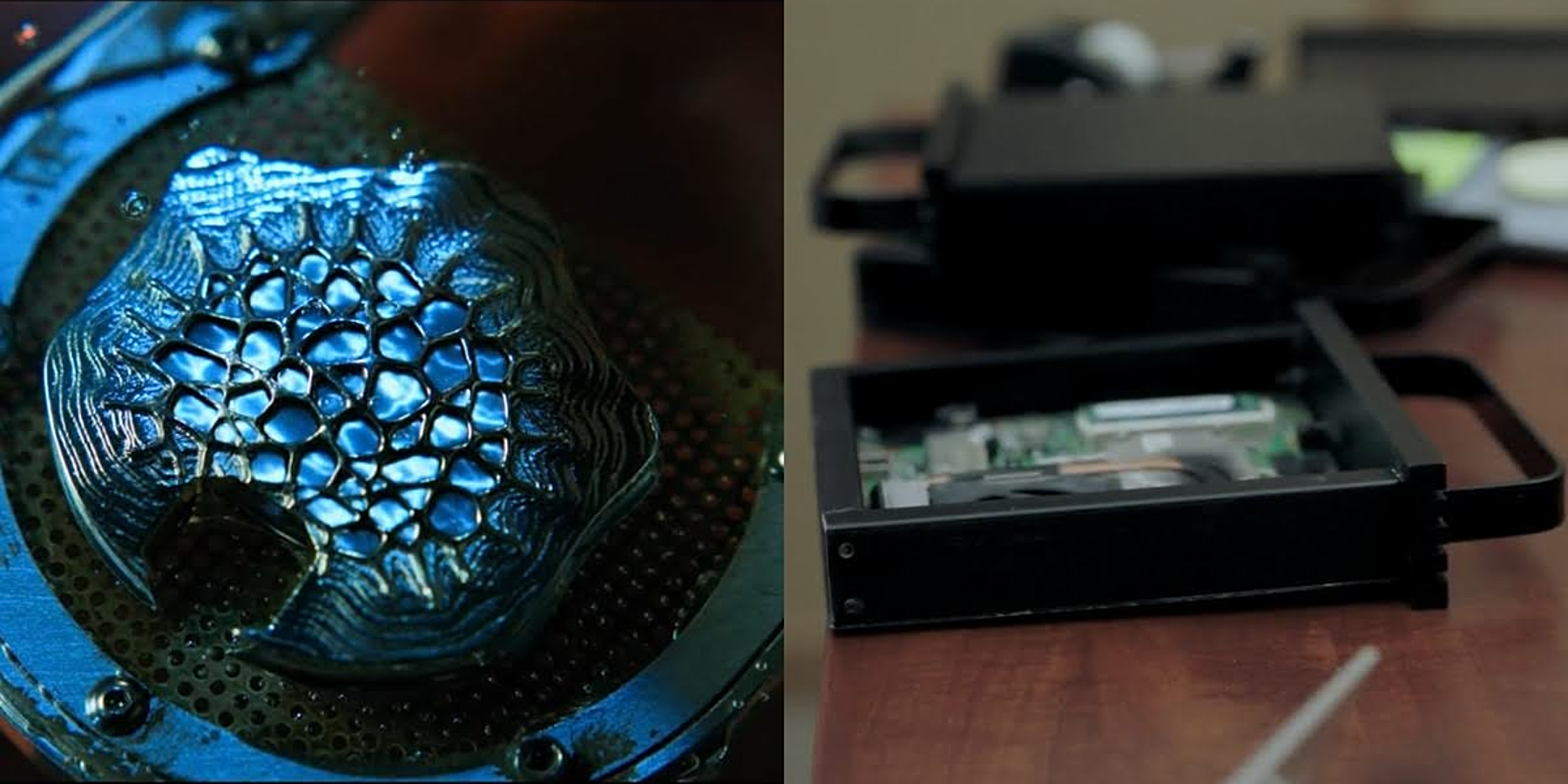Upload/Altered Carbon: Digital Life Extension, Explained
Using technology to extend life—as seen in Star Wars and James Cameron’s Avatar—is up there with time and space travel among popular sci-fi tropes. It is a concept vital to these other elements, whether the goal is to survive the unimaginably long journeys to distant exoplanets or simply beating death itself.
Netflix’s Altered Carbon and Amazon Original’s Upload sit confidently at the top of an ever-growing list of shows that imagine a world where humanity has conquered death. Inspired by man’s innate desire to live forever, digital life extension is a sci-fi subgenre that imagines surmounting humanity’s greatest biological limitation with technology.
How the Shows Explore the Concept
In Altered Carbon, devices known as ‘stacks’ are the primary means of extending human life. A stack is a small, durable, disc-shaped device implanted in a person’s cerebral cortex to store their memories, personality, and general consciousness. It is essentially a second brain, carrying a digital copy of one’s being, which can be transferred into another body (or sleeve, as the show calls it) upon the death/destruction of that person’s original body. This is especially useful in cases where the person might have been murdered, as law enforcement could simply ‘spin them up’ again from their stack to testify to the circumstances that led to their death.
Upload, on the other hand, addresses the extension of human life on a much more virtual scale. Here, people could choose not to die the old-fashioned way and instead have their consciousness uploaded onto a digital afterlife where they continue living as they did before, or sometimes in even better conditions, without a physical body. In Upload, there can be constant communication between loved ones on separate planes of existence, and a ‘dead’ person can still settle their affairs even after they are no longer physically alive. However, the show fails to recognize digital uploads as actual people, with the law ruling that they are the exclusive intellectual property of the companies that provide their ‘heaven’, subject to three regulations restricting them from working, voting, or having copies of themselves.
In Upload, downloading a person’s consciousness isn’t as easy. It is an unstable, unrefined idea that is characterized by nosebleeds, head explosions, and a permanent loss of consciousness should the person’s body expire before their consciousness can be re-uploaded.
Only for the Rich
One thing sci-fi shows have done with digital life extension is to portray it as a tool of the wealthy to get wealthier and stay in power. Depending on just how deep their pockets are, the rich could very well achieve total immortality. While the law in Altered Carbon mandates that everyone gets a stack as early as age one, this does not mean much in a reality where everyone knows that tying up loose ends involves ‘blowing out’ the stacks of potential threats to ensure they permanently stay dead.
Getting a new body is not part of the bargain for the average citizen, and the price of resleeving makes the idea even less appealing. This is what sets the wealthy (known as Meths) apart. They can afford to have multiple custom-designed sleeves with already-implanted stacks at the ready and can transfer their consciousness between these sleeves at will. Ultra-rich Meths like Laurens Bancroft and Reileen Kawahara can even afford to own satellites to which they regularly upload backup copies of their stacks, useful for when even they can’t avoid getting their stacks blown out.
Upload, too, explores digital life extension as a gift that is enjoyed in its fullness by the rich only. To begin with, it is a service provided by a hyper-capitalist oligopoly. This means that, unlike Altered Carbon, no part of the technology is free, and people dying the old-fashioned way is still very much a thing due to digital life extension not being affordable to the average person.
For those who can afford to upload, there’s still a very classist arrangement in place that sees only the richest of the lot be able to afford the best digital heavens (like Lakeview). Even within Lakeview, there’s still economic segregation, with the existence of different tiers depending on the client’s financial capabilities. David Choak eats only exotic animals and has 25,000 sq ft and a 12-acre backyard in Lakeview because he can pay for it, while Yang can’t even have deep thoughts in the 2Gigs so as not to exhaust her data plan before the month runs out.
There’s Always Resistance
Digital life extension is not without its downsides. Altered Carbon and Upload show that while the majority of humanity desires to extend their enjoyment of life without worrying about death, there will always be a faction that longs for the return of a more natural, finite existence, as existed before the discovery of immortality.
These rebellious factions believe that immortality breeds a most corrupt and unbalanced system, and this ideology fuels their fight to restore the old order. They believe digital life extension is the new instrument of the wealthy to amass more wealth and further reinforce the status quo. In Upload, the Ludds are a pseudo-religious group that views digital life extension as blasphemous and is committed to rejecting all forms of advanced life-extending technology. Similarly, in Altered Carbon, the Quellists are a resistance movement inspired by the teachings of Quellcrist Falconer. Their goal is to end Meth immortality—an irony, given that much of it exists due to Falconer’s own contributions—and to restore the natural order.
Immortality Still Isn’t Guaranteed
Upload stresses that although measures might have been taken to prevent negative unforeseen circumstances, preserving a person’s consciousness largely depends on the lifespan of the hard drives on which they are stored. This reduces the appeal of uploading to digital heaven, as a person could be wiped out of existence if the servers are damaged in the real world. Also, a person’s consciousness (or scan) can be deleted during emotional volatility, like when Nathan Brown’s girlfriend, Ingrid Kannerman, threatens him with the delete button after he expresses dissatisfaction at how his memorial played out.
Altered Carbon, on the other hand, cuts immortality short in a grittier manner. Cortical stacks are waterproof and can withstand significant damage, so permanent death is usually a result of bare-faced intention. People get ‘real-deathed’ with gunshots directly to the stack, high-energy weapons fired at close range, or even a strong enough electromagnetic pulse aimed to fry their stacks. The Meths are the subject of every other person’s hate, and anyone in the right position can interfere with their backups and needlecasts—a process where they transmit their consciousness between planets—enough to corrupt their stacks and prevent their revival. Also, stacks are susceptible to Elder infection, an unstoppable and deadly alien phenomenon that contaminates stack data and backups.


